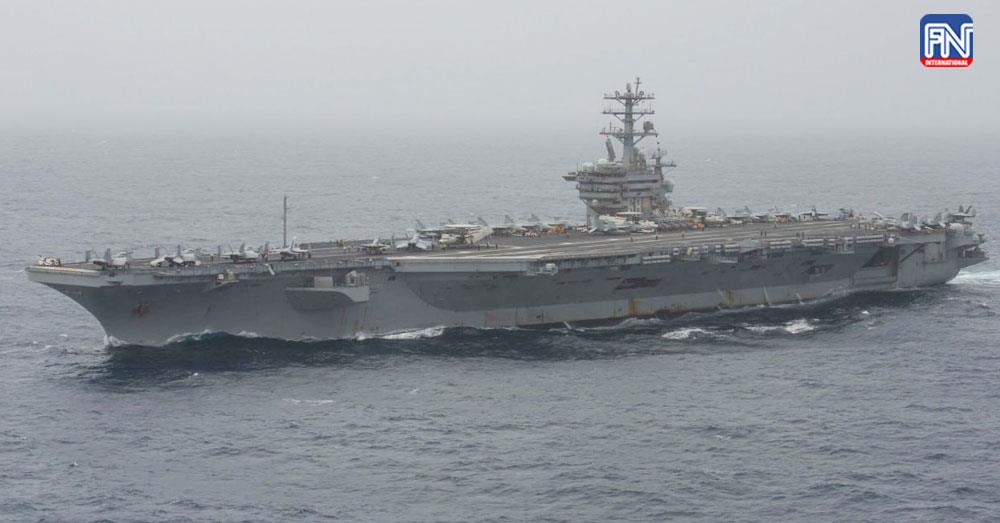SEOUL, March 28 (Yonhap) -- A nuclear-powered U.S. aircraft carrier arrived in the southeastern port city of Busan on Tuesday, in yet another show of America's military might against growing North Korean threats.
The USS Nimitz carrier docked at ROK Fleet Command in the city, 325 kilometers southeast of Seoul, after its strike group trained with the South Korean Navy in the international waters south of the southern island of Jeju the previous day.
Its presence here is expected to send a warning to Pyongyang, which has been ratcheting up tensions through missile launches and repeated threats to use nuclear weapons in a contingency, observers said.
The flattop is the flagship of Carrier Strike Group 11, which includes two Arleigh Burke-class destroyers, USS Wayne E. Meyer and USS Decatur. It has brought some 70 combat aircraft, including F/A-18 fighters and E-2 Hawkeye early warning aircraft.
(ATTN: UPDATES with U.S. official's remarks in paras 6-9; RECASTS 4th para)
SEOUL, March 28 (Yonhap) -- A nuclear-powered U.S. aircraft carrier arrived in the southeastern port city of Busan on Tuesday, in yet another show of America's military might against growing North Korean threats.
The USS Nimitz carrier docked at ROK Fleet Command in the city, 325 kilometers southeast of Seoul, after its strike group trained with the South Korean Navy in the international waters south of the southern island of Jeju the previous day.
Its presence here is expected to send a warning to Pyongyang, which has been ratcheting up tensions through missile launches and repeated threats to use nuclear weapons in a contingency, observers said.
The flattop is the flagship of Carrier Strike Group 11, which includes two Arleigh Burke-class destroyers, USS Wayne E. Meyer and USS Decatur. It has brought some 70 combat aircraft, including F/A-18 fighters and E-2 Hawkeye early warning aircraft.
The nuclear-powered USS Nimitz aircraft carrier arrives at ROK Fleet Command in Busan, 325 kilometers southeast of Seoul, on March 28, 2023. (Yonhap)
The nuclear-powered USS Nimitz aircraft carrier arrives at ROK Fleet Command in Busan, 325 kilometers southeast of Seoul, on March 28, 2023. (Yonhap)
On the eve of its port call in Busan, the North fired what it claimed to be "tactical" ballistic missiles loaded with simulated "nuclear warheads." The launch followed a series of earlier weapons tests, including that of an "underwater nuclear attack drone."
In a press meeting aboard USS Nimitz on Tuesday, Rear Adm. Christopher Sweeney, the commander of the carrier strike group, highlighted the allies' readiness to deal with "any contingency."
"We train at all levels in all domains from space to the undersea with our allies," he said.
Asked if he had any message for North Korea, he said the U.S. military does not seek conflict with it.
"We seek peace and security. We are not going to be coerced and we are not going to be bullied, and we are not going anywhere," he said.
Concerns have persisted that the North would continue to engage in provocations on the pretext of responding to the allies' ongoing Warrior Shield field drills, including the Ssangyong (double dragon) amphibious landing exercise that runs through April 3.
Last September, USS Ronald Reagan visited the ROK Fleet for allied drills.
